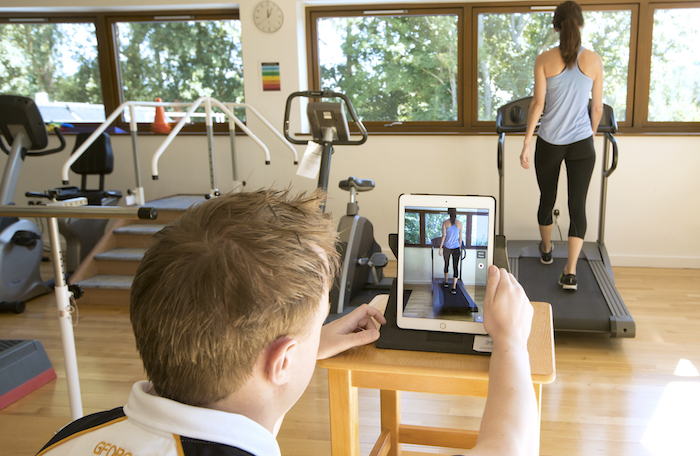Long COVID: what is it, who is at risk and what support is available?
What is it
Long COVID (also known as post-COVID-19 syndrome) is a term used to describe the effects of COVID-19 that continue for weeks or months beyond the initial illness. Many people who contract COVID-19 feel better in a few days or weeks and most will make a full recovery within 12 weeks.
But for some people, symptoms can last longer and can seem like a cycle of improving for a time and then getting worse again. The chances of having long-term symptoms does not seem to be linked to how unwell you are when you first get COVID-19. It can affect anyone who has had it, even if the illness was mild, or they had no symptoms.
Common Long COVID symptoms include:
- extreme tiredness (fatigue)
- shortness of breath
- chest pain or tightness
- problems with memory and concentration (‘brain fog’)
- difficulty sleeping (insomnia)
- heart palpitations
- dizziness
- pins and needles
- joint pain
- depression and anxiety
- tinnitus, earaches
- feeling sick, diarrhoea, stomach aches, loss of appetite
- a high temperature, cough, headaches, sore throat, changes to sense of smell or taste
- rashes
How long does Long COVID last
We are still learning how long the illness lasts and details of how many people are affected by long COVID are still emerging. In a study led by University of Leicester, researchers suggests that it is common for it to last five months or more, and there are separate reports of it lasting longer than 12 months. The recovery time is different for everybody.
Who is most at risk from Long COVID
Research on who is most at risk of Long COVID is in the early stages and different studies have so far produced different results regarding risk factors.
The Office for National Statistics (ONS) estimates that over a million people in the UK were reporting symptoms associated with long COVID at the beginning of March 2021, with over two-thirds of these individuals having had (or suspecting they had) COVID-19 at least 12 weeks earlier. An estimated 674,000 people reported that their symptoms have negatively impacted on their ability to undertake their day-to-day activities. People who tested positive for COVID-19 are around eight times more likely to suffer prolonged symptoms than observed in the general population
When can physiotherapy help
Many people report post Covid joint and muscle problems. Joints and muscles are better when we regularly move, and when unwell with COVID people are less active than usual. This can cause aches and pains, stiffness and muscle weakness, which can lead to difficulties with activities such as standing, climbing stairs, gripping objects with your hands or lifting your arms above your head. Some of the treatments that are needed during COVID illness can also put extra stresses and strains on joints and muscles which can cause new or increased problems.
People have said the most common problems after being unwell with coronavirus are shoulder and back problems, but some people have widespread aching that can come and go for a time as they recover. Some people also have odd or altered feelings such as numbness or pins and needles and weakness in their arms or legs.
A physiotherapist can help you plan your return to activity, explain how to pace your activity and guide you on safe exercises. If this is something you would like assistance with, please contact us for further information about booking an appointment.
What next
Long COVID clinics are being rolled out across England and have started in Wales to help those struggling with ongoing symptoms. If you’re worried about your symptoms, or if they are getting worse, contact your GP to discuss being referred.
How do I return to my usual activities after COVID?
You should aim to get back to your usual activities. Try to gradually increase the amount of movement and activity you do. Joints and muscles are designed to move but you need to pace yourself and rest when you need to. Also, take into account any other symptoms you may have, such as fatigue and your breathing. Try to do a bit more each day. Over time you should find you can do more and more.
Is it safe to exercise after COVID?
It is safe to exercise after COVID unless you have been told not to by a health professional, such as a doctor or physiotherapist. Aim for a balance between exercise/activity and rest. At first you may have to rest more frequently. As you improve you should be able to stay more active and do more exercise. Physical activity is generally good for everyone and too much rest can make joint and muscle problems worse. You should gradually increase the amount of the following:
- General physical activity; this includes all the activities you usually do. For example, washing and dressing yourself, housework, gardening, hobbies and work. Aim to gradually return to your usual routine by starting with the easier activities and then slowly introducing the more physical ones.
- Exercise; Strengthening and flexibility exercises will help your joint and muscle problems.
- Flexibility exercises are activities that improve the amount of movement in a joint or muscle. Examples of flexibility activities include; stretching, yoga and tai chi
- Strength exercises are any activities that make your muscles work harder than usual. You should try to aim to get back to doing two or more sessions of strengthening exercise each week. Examples of muscle-strengthening activities include climbing stairs, lifting weights, working with resistance bands, gardening activities such as digging, walking uphill and cycling.
Posture
It is important to change your position often. Limit the amount of time you stay in one position, such as sitting or looking at tablets and mobile phones. If you find your symptoms are worse in a certain position, find a more comfortable position or move around for a while.
Painkillers
Simple painkillers and creams you can buy at the chemist can help, but you should always ask the pharmacist for advice on what you should use. If you are taking any other tablets or medicines check with the pharmacist or your doctor before taking any new medicines.





